It looks like you're using an Ad Blocker.
Please white-list or disable AboveTopSecret.com in your ad-blocking tool.
Thank you.
Some features of ATS will be disabled while you continue to use an ad-blocker.
share:
reply to post by Kantzveldt
Sadly in 1992/3 Saddam Hussein drained the marshes and displaced the Arabs who's ancestors had lived there for 5000 years. Now the area is plagued by constant sand storms and the culture is in danger of being lost. I've been to the area in 2007 and it was a wasteland. No one lives there. The current Iraqi Government has tried to restore the marsh without success.
They still make them in the marsh regions of Iraq, and they are the undoubted model for the Sumerian flood ark, thus an Ark with an architectural counterpart had a very long history in the region.
Sadly in 1992/3 Saddam Hussein drained the marshes and displaced the Arabs who's ancestors had lived there for 5000 years. Now the area is plagued by constant sand storms and the culture is in danger of being lost. I've been to the area in 2007 and it was a wasteland. No one lives there. The current Iraqi Government has tried to restore the marsh without success.
Originally posted by ibiubu
reply to post by Druscilla
It is in Axum, Ethiopia. It is not a Jewish Cult. They are Ethiopian Orthodox Christians. Whether or not it is truly there is subject to debate.
SnF OP...interesting stuff
Ethiopian Orthodox Christians, Cult, whichever.
With all respect, thank you for the clarification.
My perspective; every religion is a cult; Islam, Christianity, Judaism, Hindu, Zoaraster, Buddhism, whichever, whatever, they're all the fascinating stuff of superstition birthed from the minds of primitive man in an attempt to make sense of things not understood, and built upon, mutated, mixed, mated, morphed, and molded over thousands of years.
In a way, Religion, as a means for attempting to explain all the whys and and whats was Primitive Man's first science.
That is, until the birth of the school of reason, and eventually actual Science.
Thank you, however, for the clarification regarding what they think of themselves as.
Here's the wikipedia page to the Church of Our Lady of Zion in Axum, Ethiopia, where "The Guardian" has to be confined with the ark (if it's
there) for the rest of his life! I hope they at least send in some good ladies, food, and internet access for the monk to enjoy as he bows before and
protects the ark.
en.wikipedia.org...
en.wikipedia.org...
reply to post by thePharaoh
I don't think there is any funerary aspect to these, there will be some Egyptian influence in the Caananite architetcural motifs, and Phonecian.
To see better how these cultic Asherah shrines developed into an association with the Ark of the Covenant one needs to look at Torah Arks, which of course have direct association with the tablets of the Law and hence the Ark...
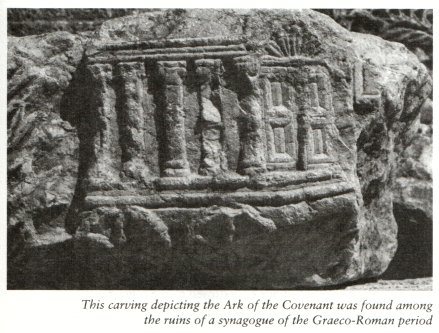
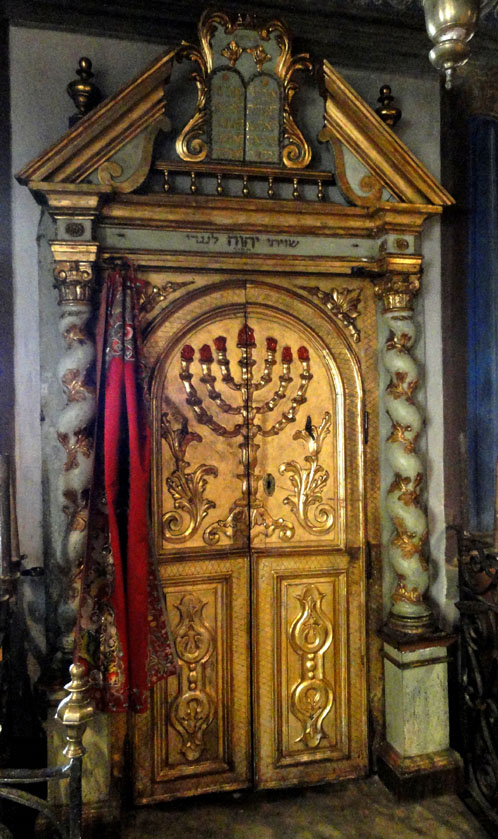
From the Jewish perspective it was very easy to relate these finds to Torah Ark development.
en.wikipedia.org...
One of the shrines discovered had a curtain seen on it;
reply to post by Aleister
Whats held in Axum is probably a Torah Ark dating back to a Jewish community from a couple of millenia ago...
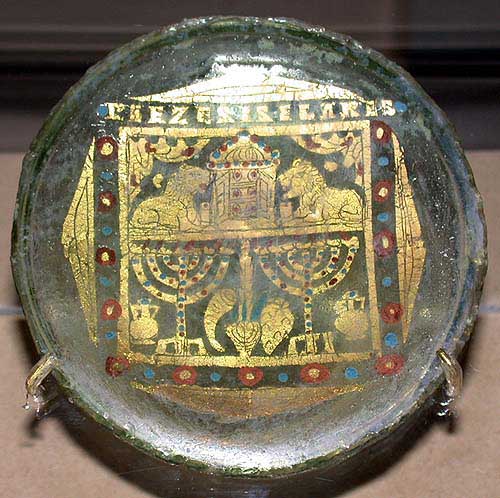
reply to post by Seede
It could still turn up in an Egyptian tomb as in the movie, but is almost certainly long since gone.
reply to post by intrptr
Yes they could also have had candles inside as part of their household shrine function..
I don't think there is any funerary aspect to these, there will be some Egyptian influence in the Caananite architetcural motifs, and Phonecian.
To see better how these cultic Asherah shrines developed into an association with the Ark of the Covenant one needs to look at Torah Arks, which of course have direct association with the tablets of the Law and hence the Ark...


From the Jewish perspective it was very easy to relate these finds to Torah Ark development.
The Torah ark or ark in a synagogue (Jewish house of worship) is known in Hebrew as the Aron Kodesh by the Ashkenazim and as the Hekhál amongst most Sefardim.[1] It is generally a receptacle, or ornamental closet, which contains each synagogue's Torah scrolls (Sifrei Torah in Hebrew). In most cases, when possible, the ark is located on the wall of the synagogue closest to Jerusalem.
Aron Kodesh comes from Hebrew אָרוֹן קׄדֶש ʼārōn qōdeš (i.e. aron kodesh), Holy Ark. This name is a reference to the ’ārōn haqqōdeš, the Hebrew name for the Ark of the Covenant which was stored in the Holy of Holies in the ancient Tabernacle and the Temple in Jerusalem.
en.wikipedia.org...
One of the shrines discovered had a curtain seen on it;
Most arks feature a parokhet (curtain). The parokhet can be placed outside the doors of the ark
reply to post by Aleister
Whats held in Axum is probably a Torah Ark dating back to a Jewish community from a couple of millenia ago...

reply to post by Seede
It could still turn up in an Egyptian tomb as in the movie, but is almost certainly long since gone.
reply to post by intrptr
Yes they could also have had candles inside as part of their household shrine function..
edit on 26-3-2013 by Kantzveldt because: (no reason given)
reply to post by poundpuppy
It's actually a good match in terms of general proportion, the Ark was 2.5 by 1.5 cubits, so as seen here 15 squares across 25 down is that proportion.
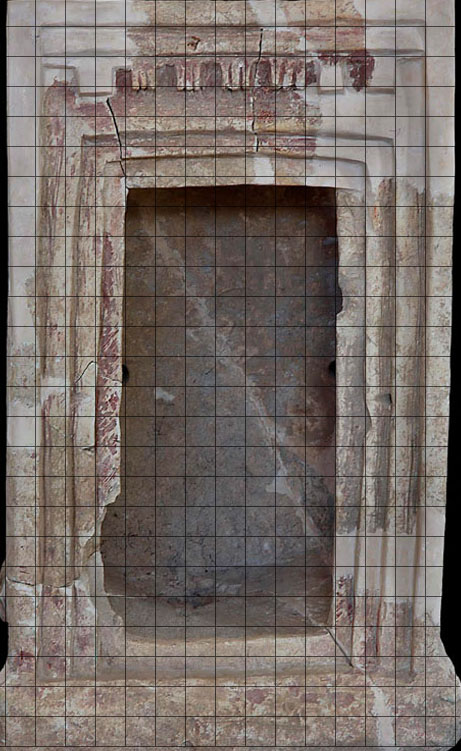
It's actually a good match in terms of general proportion, the Ark was 2.5 by 1.5 cubits, so as seen here 15 squares across 25 down is that proportion.

reply to post by Druscilla
I wouldn't say cult but many believe the the lost tribes of Israel are in Ethiopia. As for the ark it is said to be in some sacred temple there that only one member of one bloodline is allowed in. Also interestingly enough Ethiopian Christianity almost revolves around the ark of the covenant.
I wouldn't say cult but many believe the the lost tribes of Israel are in Ethiopia. As for the ark it is said to be in some sacred temple there that only one member of one bloodline is allowed in. Also interestingly enough Ethiopian Christianity almost revolves around the ark of the covenant.
reply to post by Kantzveldt
I find it interesting that Asherah has long been claimed to be a "non-existant pagan goddess".
How could an existing god have a consort who is not only a pagan but also non-existant.
The answer to this could be very interesting as well as convoluted.
What the Hebrew archaeologists seem to be ignoring however is that these Arks/Cultic Shrines are far more likely to have been related to the consort of YHWH, in terms of Asherah.
I find it interesting that Asherah has long been claimed to be a "non-existant pagan goddess".
How could an existing god have a consort who is not only a pagan but also non-existant.
The answer to this could be very interesting as well as convoluted.
reply to post by Druscilla
Myself and many others agree with the idea that all religious practices are occultic in nature. I was just trying to point out that Ethiopian Christianity is a mainstream religion, not an idolatrous cult in the classical historical context. Their beliefs do not center around the ark. The ark is believed to have been brought back by Moses, who by many historical accounts was Ethiopian. Ethiopian, Greek, and Syrian orthodox christianity are very similar. Many orthodox Ethiopians and Syrians worship at Greek Orthodox Churches in the US.
And hey, Ethiopian Christians have the best music of any religion: Bob Marley and family.
Here's a bit on one idea about how the ark of the covenant moved around...
Maybe Dan Brown knows where it is?
Axum Chapel
Myself and many others agree with the idea that all religious practices are occultic in nature. I was just trying to point out that Ethiopian Christianity is a mainstream religion, not an idolatrous cult in the classical historical context. Their beliefs do not center around the ark. The ark is believed to have been brought back by Moses, who by many historical accounts was Ethiopian. Ethiopian, Greek, and Syrian orthodox christianity are very similar. Many orthodox Ethiopians and Syrians worship at Greek Orthodox Churches in the US.
And hey, Ethiopian Christians have the best music of any religion: Bob Marley and family.
Here's a bit on one idea about how the ark of the covenant moved around...
The Ark was then kept safe in Ethiopia over the millenia, carefully hidden during wars, and today it is enshrined in a special treasury next to the Church of St. Mary of Zion in Axum, Ethiopia.
This theory was popularized outside of Ethiopia through a 1990s book by British journalist Graham Hancock entitled The Sign and the Seal: The Quest for the Lost Ark of the Covenant. Hancock argues that after the Ark was brought to Ethiopia by Menelik, it was kept there for 800 years by a Judaic cult. Then it was seized by the Knights Templar, who thought that it was the Holy Grail. The Knights converted the Jews, who then kept the Ark in a great church.
Maybe Dan Brown knows where it is?
Axum Chapel
edit on 26-3-2013 by ibiubu because: (no reason given)
reply to post by Kantzveldt
The small shrines appear to be house shrines typical of that period:
Artifacts
The boxes do seem like arks to house something. If they were arks associated with Asherah, that would be an incredible find. The Ariyahu's worship of Yahweh and Asherah was interesting. Was this co-mingling of beliefs incorporating past Asherah pagan worship with monotheistic beliefs about Yahweh from the early Israelites? Or was it due to the fact that Yahweh was a common last name, and their main god was female, Asherah? Or was it simply, that Asherah was Yaweh's female counterpart, or wife?
Some of this is talked about in this article about Kuntillet 'Ajrud which perhaps you have already seen...
Puzzling Finds from Kuntillet 'Ajrud
Asherah may be making a comeback after all...here she is...

Here's a link to a book about Asherah and early monotheism:
Only One God? Veneration of Asherah in Monotheism
The small shrines appear to be house shrines typical of that period:
House Shrines
Click for a slide show of larger images.
These small clay house shrines abound on the antiquities market and in private collections. Used from the third millennium B.C. through the Biblical period, they are thought to have originated in the Jordan River valley—mostly in Transjordan. Despite their numerous presence on the antiquities market, only a few have come from professional excavations, including a couple from Israelite sites.*
Although the exact function of these house shrines is still unknown, they are rich with familiar iconography. From the tree-like columns to the lion bases and the doves perched atop the roofs, all of these are well-known symbols of the goddess Asherah and her counterparts in the ancient Near East. Some of the shrines even have female figures, which may represent the goddess herself or her worshipers. The house shrines suggest the strong presence of popular religion, probably practiced in the home by a majority of the population, that went against the official Israelite monotheism and elite Temple-centered worship that the Biblical writers promoted.
Artifacts
The boxes do seem like arks to house something. If they were arks associated with Asherah, that would be an incredible find. The Ariyahu's worship of Yahweh and Asherah was interesting. Was this co-mingling of beliefs incorporating past Asherah pagan worship with monotheistic beliefs about Yahweh from the early Israelites? Or was it due to the fact that Yahweh was a common last name, and their main god was female, Asherah? Or was it simply, that Asherah was Yaweh's female counterpart, or wife?
Some of this is talked about in this article about Kuntillet 'Ajrud which perhaps you have already seen...
Puzzling Finds from Kuntillet 'Ajrud
Asherah may be making a comeback after all...here she is...

Here's a link to a book about Asherah and early monotheism:
Only One God? Veneration of Asherah in Monotheism
edit on 26-3-2013 by ibiubu because: (no reason given)
I think that the idea that the object actually represent the ark is a stretch, but I do see how the objects could represent "cabinet' that the ark
could have been kept in, within the "holy of holies".
I could see how the Hebrews co-opted existing regional architectural elements in the building of the temple.
There is an article out there by an archeologist, about a plaque found in Egypt, that appears to commemorate the delivery of the Ark to the temple by artisans from crete. The plaque has a relief on it that appears to show the tabernacle and the holy of holies and the ark, during the period of the first temple. The plaque has the same triple reccessed doorway element as the objects in the op.
I don't think that discovery got the attention it deserved.
And it fits with the idea that there has been more than one ark of the covenant, there is a very good documentary by a French film maker, that traces the history of the ark, and the original was a war drum.
The idea of it being a war drum is well grounded in Hebrew history. It also fits with the idea the the Hebrews were not slaves in Egypt, but were in fact a mercenary tribe employed by the Egyptians to guard the eastern border of the empire. As an Egyptian military establishment, the Hebrew corps would have carried a large war drum as a command tool.
I believe that conservative Hebrews rejected the building of the temple and its associated idoltary and preserved the idea of the drum. When Jerusalem was sacked by the Babylonians the priests fled with both objects, the temple ark , which was the piece commisioned from the cretan artisans, and the traditional ark which was a war drum.
Now back to the film , the film maker traces the journey of the ark through the holy land and east Africa
It was lost several times and the one in Ethiopia is a replica, but the original temple ark did reside there at one time. The traditional ark was carried further south into Africa where it finally came to rest with the Lemba, who are descended from the Jewish priestly class. The current drum was constructed in the early middle ages and is now kept in a museum wharehouse in Zimbabwe.
I could see how the Hebrews co-opted existing regional architectural elements in the building of the temple.
There is an article out there by an archeologist, about a plaque found in Egypt, that appears to commemorate the delivery of the Ark to the temple by artisans from crete. The plaque has a relief on it that appears to show the tabernacle and the holy of holies and the ark, during the period of the first temple. The plaque has the same triple reccessed doorway element as the objects in the op.
I don't think that discovery got the attention it deserved.
And it fits with the idea that there has been more than one ark of the covenant, there is a very good documentary by a French film maker, that traces the history of the ark, and the original was a war drum.
The idea of it being a war drum is well grounded in Hebrew history. It also fits with the idea the the Hebrews were not slaves in Egypt, but were in fact a mercenary tribe employed by the Egyptians to guard the eastern border of the empire. As an Egyptian military establishment, the Hebrew corps would have carried a large war drum as a command tool.
I believe that conservative Hebrews rejected the building of the temple and its associated idoltary and preserved the idea of the drum. When Jerusalem was sacked by the Babylonians the priests fled with both objects, the temple ark , which was the piece commisioned from the cretan artisans, and the traditional ark which was a war drum.
Now back to the film , the film maker traces the journey of the ark through the holy land and east Africa
It was lost several times and the one in Ethiopia is a replica, but the original temple ark did reside there at one time. The traditional ark was carried further south into Africa where it finally came to rest with the Lemba, who are descended from the Jewish priestly class. The current drum was constructed in the early middle ages and is now kept in a museum wharehouse in Zimbabwe.
reply to post by ibiubu
Asherah was certainly seen as the wife of El, the common title for God in the opening books of the bible, the cult of YHWH seems to progress from being the champion God of Israel, to supreme amongst all Deities, to the unique creator God of the cosmos, in all this Asherahs cult is the most difficult to suppress as it was of such importance...the tree of life and sacred groves were an aspect of it.
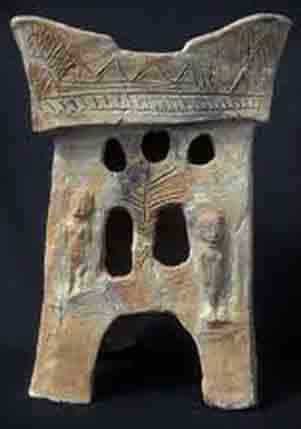
She could be referred to as Qodesh 'Holiness', which is of course the same title as for the Ark, and her relationship to this is whats intriguing here.
The house shrines were based on actual Temple porticos sacred to Asherah, by the classical period these are also seen to have developed into the Torah Arks.
It's a nice example they have on the site you linked to, the patterns there are reminiscent of Ain Dara.
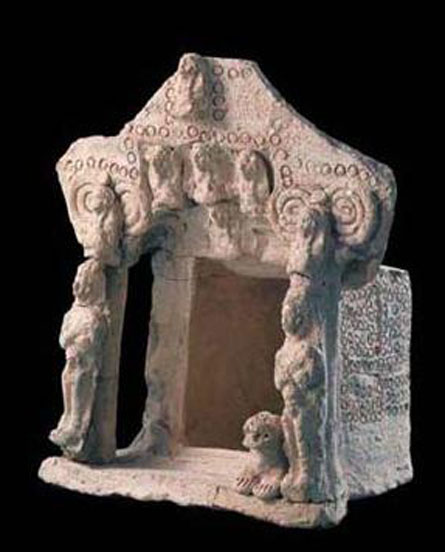
reply to post by punkinworks10
You can source that plaque...?
reply to post by teamcommander
She is very well attested, with plenty of evidence for her cult, and was the wife of the creator God El, thus 'Queen of Heaven', she was written out of the story but it is of course wrong for contemporary archaeologists to fail to mention her important probable connection to those discoveries...
Asherah was certainly seen as the wife of El, the common title for God in the opening books of the bible, the cult of YHWH seems to progress from being the champion God of Israel, to supreme amongst all Deities, to the unique creator God of the cosmos, in all this Asherahs cult is the most difficult to suppress as it was of such importance...the tree of life and sacred groves were an aspect of it.

She could be referred to as Qodesh 'Holiness', which is of course the same title as for the Ark, and her relationship to this is whats intriguing here.
The house shrines were based on actual Temple porticos sacred to Asherah, by the classical period these are also seen to have developed into the Torah Arks.
It's a nice example they have on the site you linked to, the patterns there are reminiscent of Ain Dara.

reply to post by punkinworks10
You can source that plaque...?
reply to post by teamcommander
She is very well attested, with plenty of evidence for her cult, and was the wife of the creator God El, thus 'Queen of Heaven', she was written out of the story but it is of course wrong for contemporary archaeologists to fail to mention her important probable connection to those discoveries...
edit on 26-3-2013 by Kantzveldt because: (no reason given)
reply to post by Kantzveldt
Thank you for that explanation about Asherah and Yahweh
I often thought that the house shrines would have been used to burn offerings. They could have been used as space heaters as someone pointed out. What you stated is intriguing about the resemblance to temple porticos. They certainly do resemble them. A temple was meant to "house" something of importance. In that context, it makes sense that the house shrines were intended to "house" something that was sacred - similar to an ark.
In Axum, the ark (if it's there, doubtful imo) is housed in the Treasury next to the chapel. It's interesting that the most famous temple portico of all is Al Khazneh in Petra, Jordan. Was Indy on to something? The Bedouins guarded the most significant trade routes of the time and supposedly housed all their treasures in Al Khazneh, which means "the treasury."

Thank you for that explanation about Asherah and Yahweh
The house shrines were based on actual Temple porticos sacred to Asherah, by the classical period these are also seen to have developed into the Torah Arks.
I often thought that the house shrines would have been used to burn offerings. They could have been used as space heaters as someone pointed out. What you stated is intriguing about the resemblance to temple porticos. They certainly do resemble them. A temple was meant to "house" something of importance. In that context, it makes sense that the house shrines were intended to "house" something that was sacred - similar to an ark.
In Axum, the ark (if it's there, doubtful imo) is housed in the Treasury next to the chapel. It's interesting that the most famous temple portico of all is Al Khazneh in Petra, Jordan. Was Indy on to something? The Bedouins guarded the most significant trade routes of the time and supposedly housed all their treasures in Al Khazneh, which means "the treasury."

edit on 26-3-2013 by ibiubu because: (no reason given)
edit on 26-3-2013 by ibiubu because: (no reason
given)
reply to post by Kantzveldt
If the God creator El had a wife, what status does this convey to Jesus? His son begotten of a woman on earth.
This would sound much like the behaviour of the Greek gods and the demi-gods which they spawned with earth women.
I would hope the One true God would act in a more moral manner than that attributed to those other gods. Or atleast the same morals which we men are expected to follow.
She is very well attested, with plenty of evidence for her cult, and was the wife of the creator God El, thus 'Queen of Heaven', she was written out of the story but it is of course wrong for contemporary archaeologists to fail to mention her important probable connection to those discoveries...
If the God creator El had a wife, what status does this convey to Jesus? His son begotten of a woman on earth.
This would sound much like the behaviour of the Greek gods and the demi-gods which they spawned with earth women.
I would hope the One true God would act in a more moral manner than that attributed to those other gods. Or atleast the same morals which we men are expected to follow.
reply to post by ibiubu
Wrong link on Kuntillet 'Ajrud, here it is...
Ktillet 'Ajrud
Wrong link on Kuntillet 'Ajrud, here it is...
Ktillet 'Ajrud
edit on 26-3-2013 by ibiubu because: (no reason given)
reply to post by Kantzveldt
I wish I could source that article, but its been several years since I read it.
I wish I could source that article, but its been several years since I read it.
The self-ignition of flame in some Jerusalim church? How do they do that?
hey op
they are symbolic doorways, for rituals to the dead as they journey through the afterlife, to ascension.
what you have is a miniture version, an evolution of funerary equipment seen throughout egypt.
here, this is what they looked like in their prime, built into the tombs infrastructure.
these belonged to kings... not "nomads"..lol
what you have, is a later/poorer evolution of these
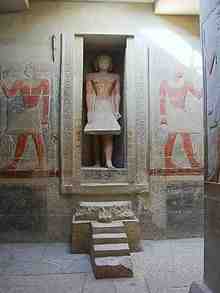
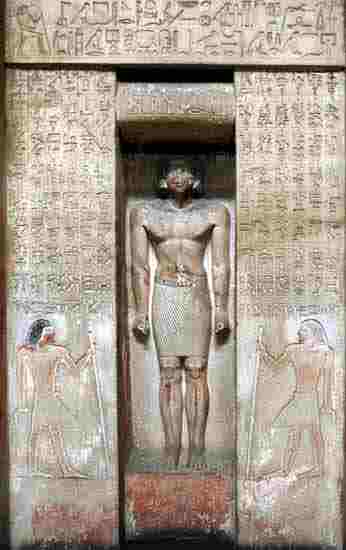
they are symbolic doorways, for rituals to the dead as they journey through the afterlife, to ascension.
what you have is a miniture version, an evolution of funerary equipment seen throughout egypt.
here, this is what they looked like in their prime, built into the tombs infrastructure.
these belonged to kings... not "nomads"..lol
what you have, is a later/poorer evolution of these


edit on 26-3-2013 by thePharaoh because: (no reason given)
Years ago when I was studying this topic some interesting points were made from a biblical truth standpoint. Messiah Yeshua became our passover lamb,
and it was the duty of the High Priest to sprinkle the blood atoning for their sins on the ark of the covenant. It was thus thought that logically,
when Messiah died on the cross, as his blood dripped down the pole and the earthquake happened at his death that his blood dripped on the ark. There
was an interesting youtube about it.
I believe it will be revealed eventually.
I found a pretty good video showing the places and reasons why it appears to be the proper location for Yeshua's crucifixion and how it shows what Ron Wyatt shared about his findings.
Here is another interesting site www.arkdiscovery.com...
I believe it will be revealed eventually.
I found a pretty good video showing the places and reasons why it appears to be the proper location for Yeshua's crucifixion and how it shows what Ron Wyatt shared about his findings.
Here is another interesting site www.arkdiscovery.com...
edit on 26-3-2013 by UnifiedSerenity because: added
site
edit on 26-3-2013 by UnifiedSerenity because: added a better video
new topics
-
Green Grapes
General Chit Chat: 3 hours ago -
Those Great Fresh Pet Commercials
Television: 9 hours ago -
S.C. Jack Smith's Final Report Says Trump Leads a Major Conspiratorial Criminal Organization!.
Political Conspiracies: 11 hours ago
top topics
-
Joe meant what he said about Hunter's pardon....
US Political Madness: 12 hours ago, 11 flags -
S.C. Jack Smith's Final Report Says Trump Leads a Major Conspiratorial Criminal Organization!.
Political Conspiracies: 11 hours ago, 11 flags -
Advice for any young Adult .
General Chit Chat: 12 hours ago, 10 flags -
Green Grapes
General Chit Chat: 3 hours ago, 5 flags -
It’s Falling…
Philosophy and Metaphysics: 15 hours ago, 4 flags -
Regent Street in #London has been evacuated due to a “bomb threat.”
Other Current Events: 13 hours ago, 3 flags -
Those Great Fresh Pet Commercials
Television: 9 hours ago, 3 flags
active topics
-
Los Angeles brush fires latest: 2 blazes threaten structures, prompt evacuations
Mainstream News • 107 • : Vermilion -
Russia Ukraine Update Thread - part 3
World War Three • 6904 • : Imhere -
Steering the Titantic from the Drydock.
Rant • 43 • : charlest2 -
House Passes Laken Riley Act
Mainstream News • 21 • : WeMustCare -
What Comes After January 20th
Mainstream News • 33 • : underpass61 -
President Carter has passed
Mainstream News • 44 • : WeMustCare -
Those stupid GRAVITE commercials
Rant • 13 • : GENERAL EYES -
-@TH3WH17ERABB17- -Q- ---TIME TO SHOW THE WORLD--- -Part- --44--
Dissecting Disinformation • 3973 • : duncanagain -
Green Grapes
General Chit Chat • 1 • : nugget1 -
Those Great Fresh Pet Commercials
Television • 4 • : BingoMcGoof
